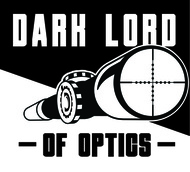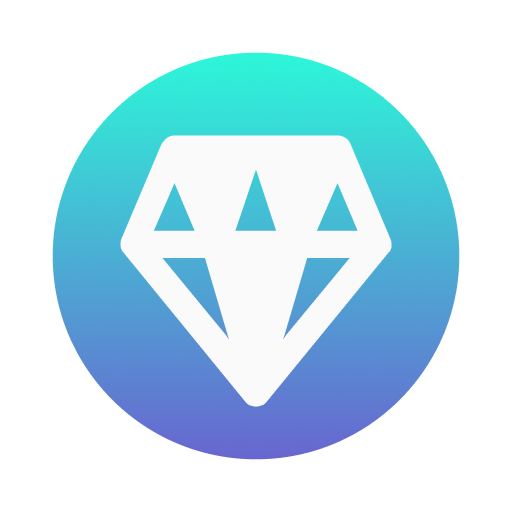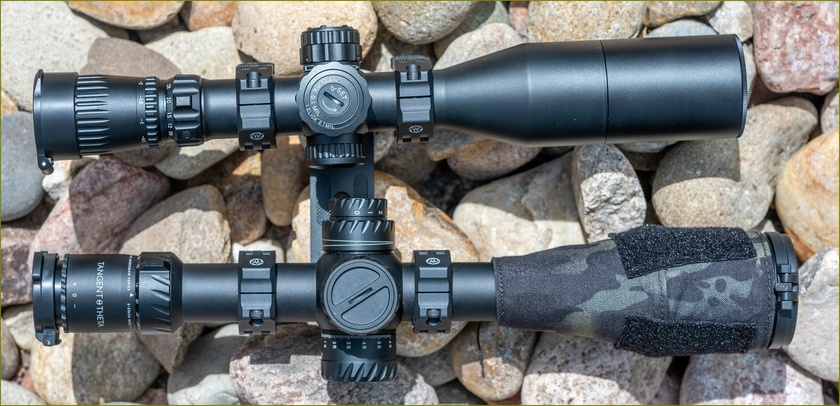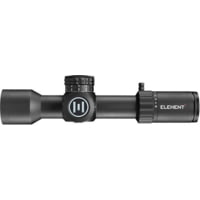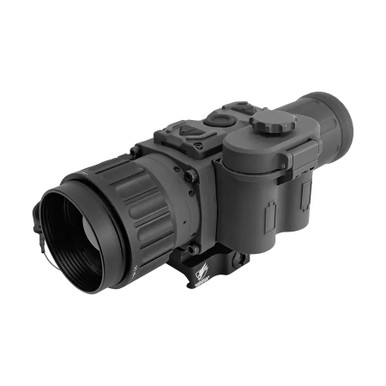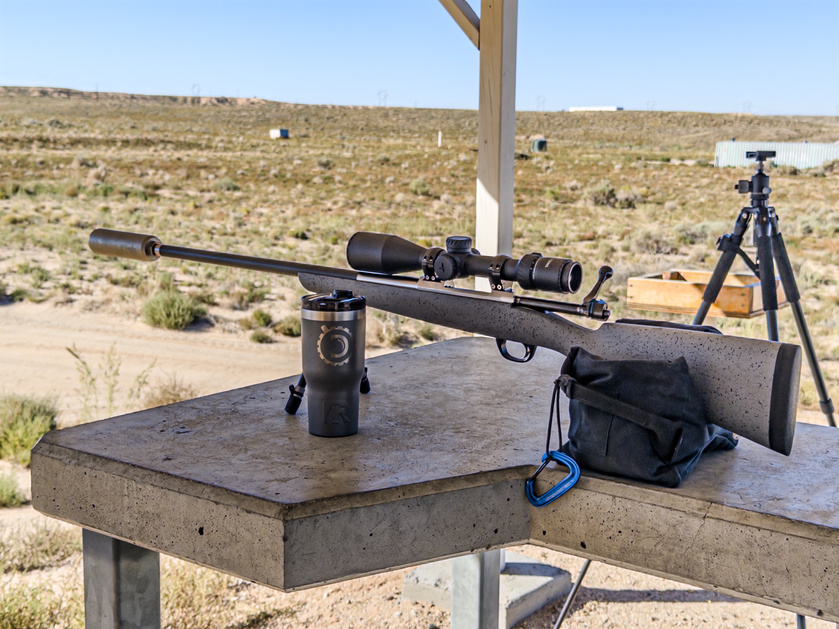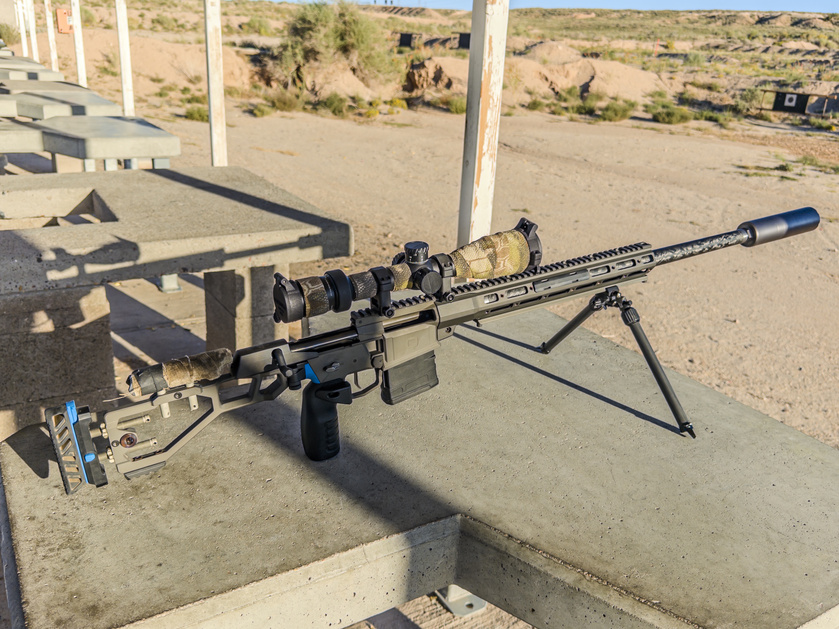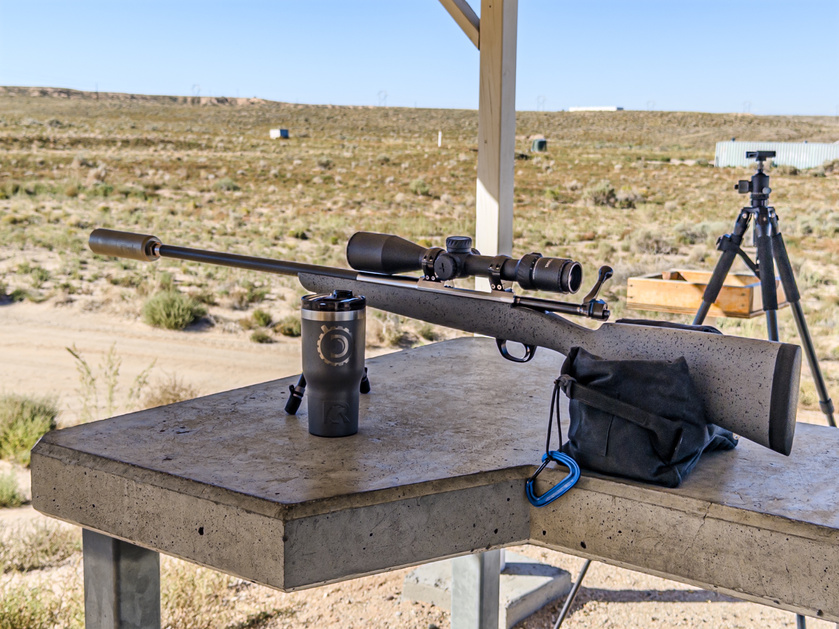March 4.5-28x52 High Master Review and Comparison to Tangent Theta 5-25x56 Page 4
RETICLE & ILLUMINATION
One of the most important choices one can make in a long range scope today is the reticle, this is, after all, what you will see every single time you bring the scope to your eye so it’s important to make sure that it fits the needs or your shooting style. That being said, reticle selection or preference is extremely subjective and saying Brand X reticle is “the best” is like saying “Brand X vanilla ice cream is the best” – we all have different tastes, and the good news is that there are many options available to the long range community. With this in mind, my ratings below should be taken with a grain of salt because they are based on MY preference, but I will explain what I like and why, which should help you understand if it might be something you would like or not like even though I may have a differing opinion.
Reticle & Illumination Assessment criteria (rating 1-10 with 1 being worst and 10 being best):
Reticle Usability – Tie: March – 10 | Tangent Theta – 10
The reticle in the March is their new FML-TR1, which is a superb design created by none other than the Dark Lord of Optics himself. The reticle provided in the Tangent Theta is their Gen 3XR design. Both are a newer .2 mil hash design with dots in the Christmas tree, which I prefer, because they do not obscure the image as much as the solid lines of some other tree designs. One of the interesting features of the FML-TR1 is that the Christmas tree dots virtually disappear when you’re not using them, they blend into the background. The Gen 3XR also does a decent job at this but not to the level of the TR1. A feature shared in both designs are the larger center dot, in a trend by many manufacturers to make the tiniest center dot possible, I find myself constantly searching for this dot, especially on dark backgrounds, but that does not happen with the FML-TR1 and Gen 3XR which both use a .075 mrad dot. The FML-TR1 adds a .075 mrad center cross to complement the dot, this cross is .2 mrad wide and is spaced .2 mrad from the center dot and main stadia making it very easy to measure without clutter, the Gen 3XR has large dots every full mrad mark in both horizontal and vertical stadia. When I first saw the specs for the reticle, I was worried the center would be too thick, but it is ideal in my book offering the perfect balance and allowing it to be usable even at low magnification.
Illumination Color and Brightness – Advantage March: March – 7 | Tangent Theta – 6
Both scopes offer red illumination as the only option. Tangent Theta has lackluster performance when it comes to brightness, but sufficient for low light engagements. March has improved on previous performance but still does not deliver a daylight bright illumination out of their 6-setting module, although it too is sufficient for low light situations. I would say the March is ever so slightly brighter than the TT illumination. March did not exhibit illumination bleed while the Tangent Theta’s illumination did show slight bleed on full power but not enough to be distracting.
Overall Reticle & Illumination Assessment – Advantage March: March – 17 | Tangent Theta – 16 (20 points possible)
Neither of these scopes’ illumination modules are going to wow the user for usability during daylight hours. Scopes like Kahles and ZCO both offer much brighter illumination so if you are a shooter who likes to have the little extra during the day you may be somewhat disappointed. That being said, illumination in long range scopes is typically relegated to lower light situations and that’s where the March and Tangent will perform adequately.
ERGONOMICS
Overall Ergonomic Assessment – Tie: March – 8 | Tangent Theta – 8 (10 points possible)
Tangent Theta excels with the traditional design in long range scopes, clearly, they are regarded as some of the best glass and mechanics with superb fit and finish that is virtually unmatched by any scope on the market. Tangent includes the excellent Tenebraex caps and ARD which is a very nice touch; however, I do wish the Tenebraex caps would lay flatter when opened. Tangent could use larger numbers on their turrets while the March could use a better illumination control module. March has the large elevation shroud and includes flip caps, throw lever and sunshade for those who desire those features, March turrets are also low profile while Tangent’s are some of the meatiest out there. March offers greater magnification and FOV while reducing size and weight considerably. The overall ergonomic winner is a tie, the March has an advantage with its short body and the Tangent has an advantage with the toolless turrets.
FIT & FINISH
Overall Fit & Finish Assessment – Advantage Tangent Theta: March – 8 | Tangent Theta – 9 (10 points possible)
As good as the March is in overall craftsmanship, and it is superb… the best I have seen from Japan, earning it a spot in the ranks of alpha class scopes that are dominated by European craftsmanship, I do have to give the nod to Tangent Theta with overall fit and finish. Quality reeks from this scope everywhere you look, the precise fit of every single part abounds with the precision that Tangent Theta is known for. All that being said March has their own set of impeccable craftsmen (and women) who are hand assembling each and every scope, if Tangent Theta gets a 9 then March is not far behind with an 8, we are truly splitting hairs when it comes to the fit and finish of each of these scopes – as it should be with the alpha class.
PRICE
Overall Price Assessment – Advantage March: March – 7 | Tangent Theta – 5 (10 points possible)
Most knowledgeable shooters are aware that the alpha class of sport optics is not cheap, you are guaranteed to pay in the thousands for these top-quality optics, but the March and Tangent Theta scopes really push the wallet to the limit. MSRP for the March comes in at a teeth grinding $3590 while the Tangent Theta is a “do I really need two kidneys’” - $4800! Street price you can expect to pay less but not much less.
Final Score – Advantage Tangent Theta: March – 226.6 | Tangent Theta – 239.8 (out of 270 possible points)
It should come as no surprise that Tangent Theta takes the blue ribbon in this competition, but the March has proven to be a confident runner up. This was kind of an “unfair” comparison to begin with as we are comparing one of the best scopes on the market today to a new comer that is designed to push the limits what can be done in a short body design. The final results are very close and I could easily see any one shooter choosing one scope over the other. At the end of the day the March has so much going for it: less expensive, shorter, lighter, more ergonomic with very nice turrets, High Master glass with amazing color/contrast with an industry leading FOV (for its magnification range). The Tangent Theta bests the March in several areas including overall resolution, edge to edge sharpness, overall fit and finish, eyebox and DOF. If the features of the Tangent Theta suit your fancy more than March you won’t find an argument from me, but I highly recommend you give the March a chance especially if you're looking for a scope that packs so much into a shorter/lighter design, I think you will be pleasantly surprised and at over $1200 less, your wallet will be thanking you as well.
Areas of Improvement
March
The first item that comes to mind is for March to design non-translatable turrets, that is - turrets that do not rise and fall as you spin them up or down. I would also like to see a similar locking turret design with larger diameter turret as is on the 5-42x56 HM. Get an illumination module like so many other new scopes that have excellent low light quality with no bleed but also bright enough to be used when the sun is out, and a different design for easier manipulation of settings especially if wearing gloves.
Tangent Theta
Get a daytime bright illumination module. Larger and more bold numbering and dashes on the turrets, maybe even reduce the height of the turrets. Reduce spacing on turrets to 12 mrad per rev and increase the travel to 36 mrad total. This design which originates from Optronika could use an optical formula face lift, maybe something like a shorter bodied 5.5-33x56 with a wide angle eye piece – how many shooters would turn their heads if TT came out with a completely new scope and not something they essentially inherited from Premier Reticles? My final comment is for Tangent to invest in better multi-coating to help eliminate flare when the scope is pointed towards the sun, depending on position there can be significant flare and ghosting which shouldn’t be there at this price point, sure you can put on the ARD to help eliminate this, but many will not be using that part for most of their shooting.
How does the March compare to Brand X?
Often when I do these reviews, I get asked the question, “how does it compare to insert favorite brand/model here” and while I’ve gone through a number of alpha class scopes I simply do not have the money or time to try them all. What I can tell you is I did a brief comparison of the 4.5-28x52 HM with a ZCO 4-20x50 and with the updates that March has made to the final (production) version I can confidently say the March gives the ZCO a run for the money. At about the same price, the March offers a scope that is slightly smaller than ZCO’s ultra short but with magnification and FOV that bests both of ZCO’s offerings (the 4-20 and 5-27). If you told me that you want the absolute best in optical/mechanical performance then I would tell you to buy the ZCO, but if you want both scopes wrapped up in one body and with greater FOV and arguably better crossover style reticle then the March 4.5-28x52 should be on your radar. The March is a scope that will be as at home on a competition rifle, a short barreled rifle like a Desert Tech, an AR platform and a hunting rifle, it may well be the most well rounded crossover scope available today which says a lot given the competition that is out there. If there is another scope you’d like me to compare to the March then send me a PM and I’ll send you my address and you can ship it to me and I’ll do a side by side evaluation 😉
Final Thoughts
Finally, reiterating what I mention at the very beginning, I am biased (we all are) and I have my own preferences and this review and opinion has influence from that, hopefully I’ve done an adequate job throughout the review to share where my personal preference comes into play in order to help you better evaluate a particular feature. I might rank a reticle as a 10 but you would rank the same at a 7. Also, I am trying out this new “scoring” system based on something Frank brought up during 2020, I am not sure how I feel about it as so much of the ratings are subjective so I welcome your constructive feedback on how I can improve or simply get rid of it entirely.
Where can you find March scopes, the good news is that since 2020 more and more dealers have begun carrying them. Keep in mind March are handmade scopes and lead time is running 45-60 days, I tried to get March to agree to a Group Buy for the Hide but they did not want to undercut other dealers so for now you will need to contact a March dealer.

